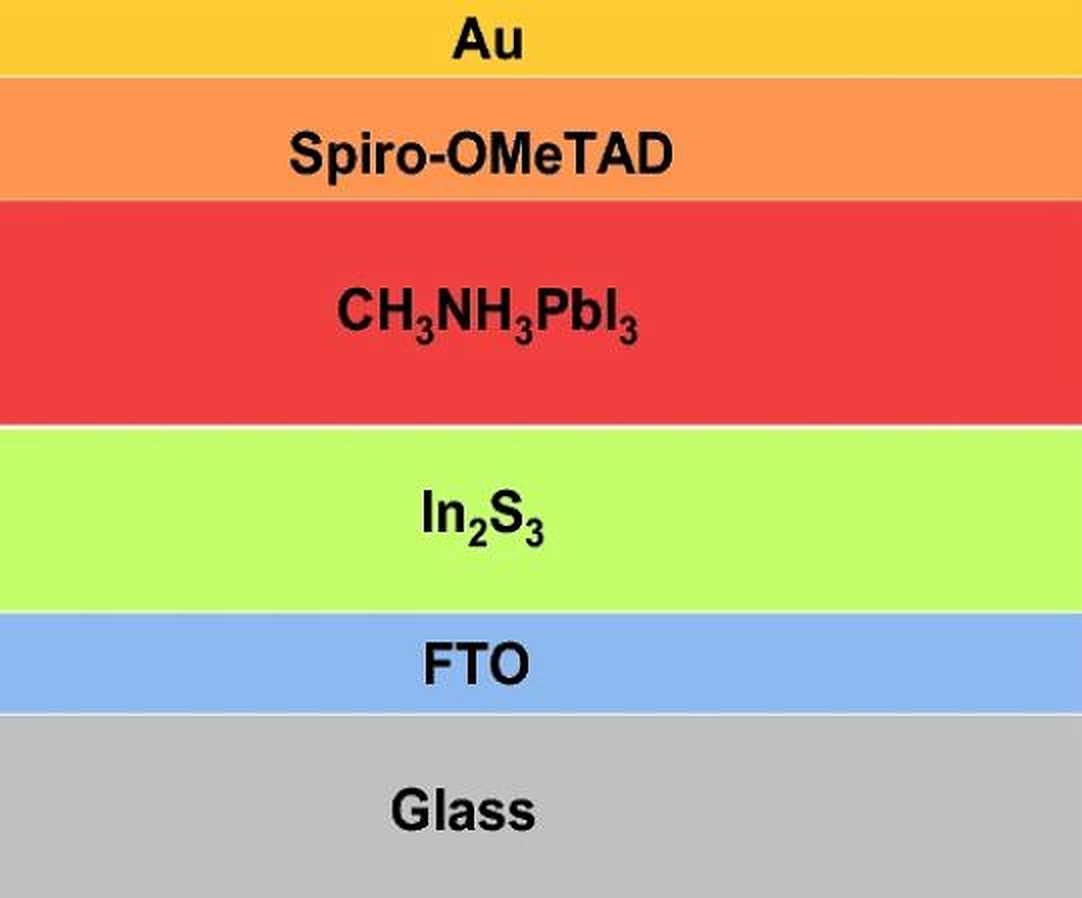An international group of researchers has designed a perovskite solar cell with an electron transport layer (ETL) made of indium sulfide (In2S3), which they claim is able to reduce the defect density in the device.
The scientists used a numerical module and the SCAPS-1D solar cell capacitance software, which is a simulation tool for thin-film solar cells that was developed by the University of Ghent in Belgium, to simulate s solar cell based on a type of lead-halide perovskite known as methylammonium lead iodide (MAPbI3).
“In2S3 is an n-type semiconductor with excellent carrier mobility, nontoxicity, an adequate bandgap, adjustable electrical properties, and good thermal durability, all of which are ideal for utilization as an ETM in solar cells,” it emphasized.
The group designed the cell with a substrate made of fluorine-doped tin oxide (FTO), the novel ETL, the MAPbI3 absorber, a spiro-OMeTAD hole transport layer, and a gold (Au) metal contact. The ideal absorber thickness, according to the simulation, should be 0.7 µm, which would reportedly maximize the photocurrent while minimizing recombination.
Popular content
The solar cell achieved a power conversion efficiency of 20.15%, an open-circuit voltage of 1.089 V, a short-circuit current of 24.18 mA/cm2, and a fill factor of 76.45%. “Overall, the solar cell performed better between 20 C and 30 C, and its efficiency rapidly decreases above that temperature,” the scientists stated.
They introduced the cell technology in the study “Insights into the photovoltaic properties of indium sulfide as an electron transport material in perovskite solar cells,” published in Scientific Reports.”This study paves the way towards practical implementation of indium sulfide as the potential ETL for MAPbI3 perovskite solar cells,” they concluded.
The team comprises researchers from Cornell University in the United States, the University of Warith Al-Anbiyaa in Iraq, the GLA University in India, the INTI International University in Malaysia, Bangladesh's Atomic Energy Research Establishment, and the King Fahd University of Petroleum & Minerals in Saudi Arabia.
This content is protected by copyright and may not be reused. If you want to cooperate with us and would like to reuse some of our content, please contact: editors@pv-magazine.com.



1 comment
By submitting this form you agree to pv magazine using your data for the purposes of publishing your comment.
Your personal data will only be disclosed or otherwise transmitted to third parties for the purposes of spam filtering or if this is necessary for technical maintenance of the website. Any other transfer to third parties will not take place unless this is justified on the basis of applicable data protection regulations or if pv magazine is legally obliged to do so.
You may revoke this consent at any time with effect for the future, in which case your personal data will be deleted immediately. Otherwise, your data will be deleted if pv magazine has processed your request or the purpose of data storage is fulfilled.
Further information on data privacy can be found in our Data Protection Policy.